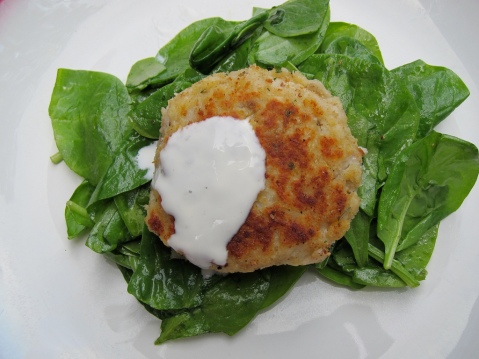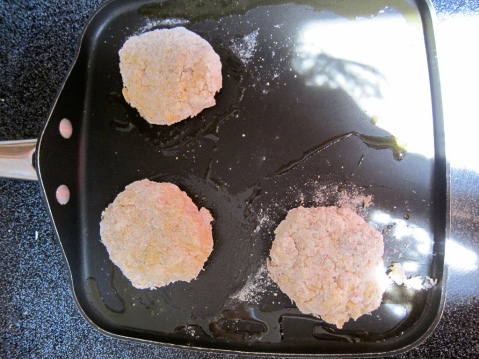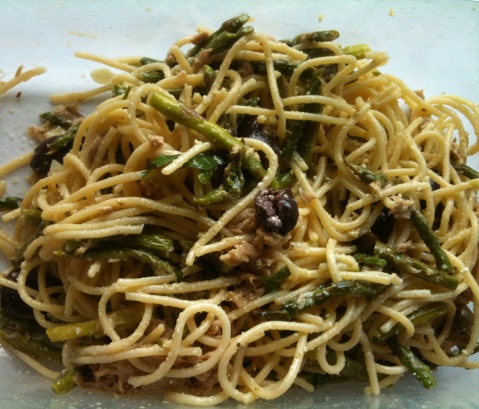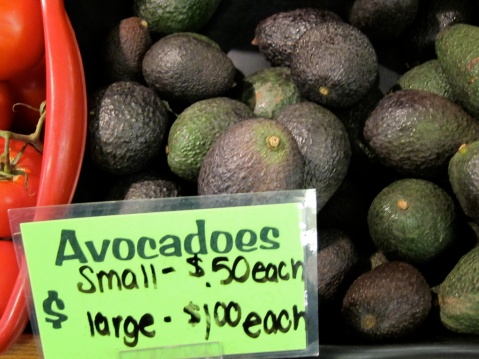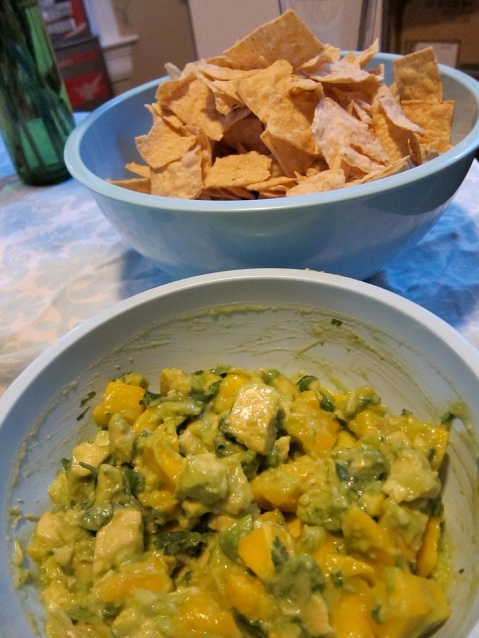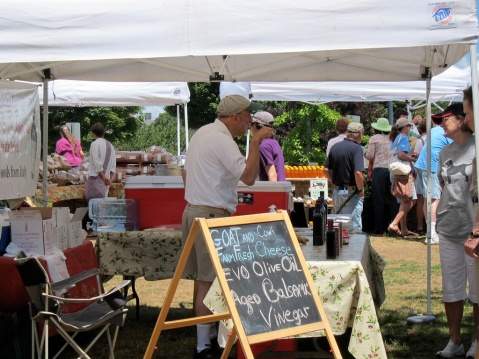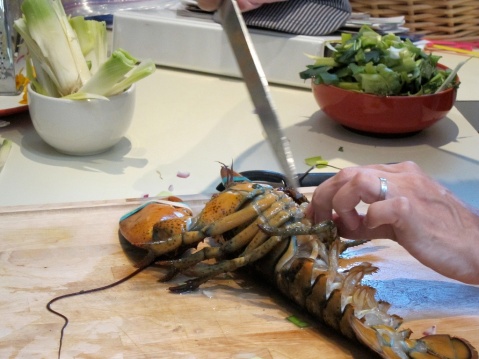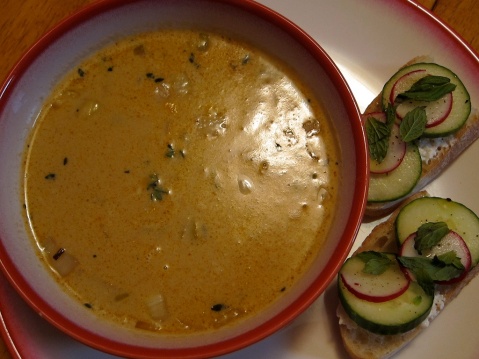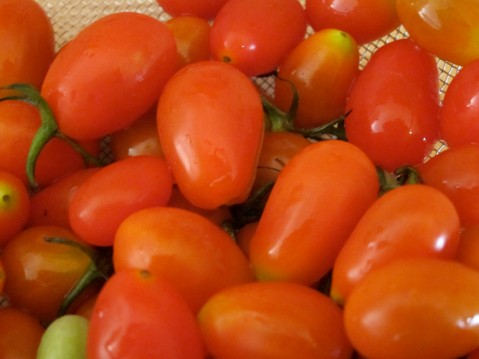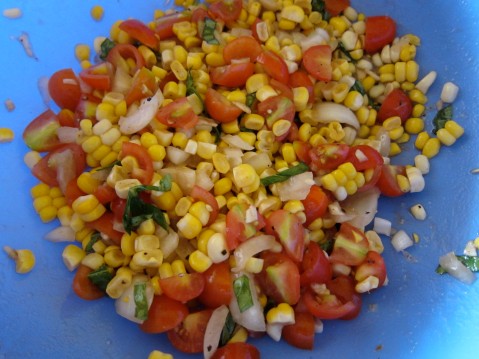Curried Carrot Mash
I watched Amarcord last night while these sweet and spicy carrots were simmering, slowly oozing out their magic. I love foods that can be left to their own devices. And the color they came up with by the time they were through–gorgeous! You can make a mash of any root, really. I made my own curry blend and threw in some pineapple juice for interestingness. And they came out great.
By some coincidence, these carrots well matched the carnival Fellini was whipping up onscreen. There is such a joy in Amarcord, I was completely enchanted by it. It’s a funny and bawdy ode to Fellini’s childhood in Rimini, a small coastal town on the Adriatic. He plays the themes of fascism/control against the cyclical chaos of life. Anyways, these were just carrots, but with the nearly day-glo orange color and the lively spice, plus a great balance of sweet and heat, I was entirely happy to eat them. There was just something simple and fun to them.
Apparently, carrot enthusiasts abound. There’s even a World Carrot Museum online.
Curry Carrot Mash
2 tbsp. olive oil
1 tsp. cumin seed
1 tsp. chili powder
1/2 tsp. ginger
1/4 tsp. garam masala
1/4 tsp. coriander
1/8 tsp. cinnamon
3 cloves garlic
1 lb. carrots, peeled and chopped roughly
6 oz. pineapple juice
2 c. water
salt
chopped peanuts for garnish
Warm the olive oil in a heavy pot (for best results) on medium heat. Add garlic and spices. Saute for about 3 minutes, then add the carrots and continue to cook for another few minutes. Pour in the pineapple juice and water and bring the heat to high and the liquid to a rolling boil. Boil for about 15 minutes, or until the liquid reduces by half. Turn the heat to med-low and cover the pot to simmer until the carrots are soft, which will take maybe another 20 minutes. Periodically check the carrots to see if they need more liquid, and, if so, add more water.
When carrots are soft, season with salt to taste. Using a potato masher, work them into a roughly creamy consistency. I like mine still chunky. Serve over brown rice and garnish with crushed peanuts. A sprig or two of cilantro would be a nice garnish as well.
Spicy Olive Tapenade
I realized yesterday that Labor Day is next Monday. Labor Day, as in summer’s bookend. Labor Day, as in the end of lazy days in the sun and the beginning of crisp air and fresh starts. New directions, refocusing. Summer was lovely and I’m sad to see it go, but I am ready for a new beginning. Out with the old and in with the new. I have so many things I don’t want to drag into the new season.
It’s been too hot in my kitchen to really cook. Luckily, this recipe requires no cooking. Nada. I’ve been in the mood to simplify things, and this tapenade is as simple as you can get. Mix it together and dip your bread into it. I served it to Josh and Rachel last week while their baby Nora was sleeping in the other room. It’s from Deborah Madison’s Vegetarian Cooking for Everyone, which has yet to disappoint. The sound of the electric fan lulling the baby to sleep, the meager, aging air conditioner turned on to its full blast, a lemony mediterranean dip, and some nice friends swapping stories around the couch. We followed up dinner (lentil salad and rice) with watermelon. What could be more summery than this scenario?
I’m not quite ready to let summer go yet, but I know that fall will usher in its own pleasures, and that feels hopeful enough for now.
Spicy Olive Tapenade
1/2 pound olives, pitted. I used Kalamata
1/4 c. capers, rinsed
1/4 c. extra virgin olive oil
2 to 3 garlic cloves to taste, finely chopped
grated zest and juice of 1 lemon
1 tsp. chopped green peppercorns, drained (I used dried black)
1 tsp. red pepper flakes
Mix it all up in a food processor (or a mortar and pestle if you don’t have one). Adjust oil as needed for desired consistency. Serve with pita points or a crusty baguette. Would be great on sandwiches, too.
Fish Cakes with Lime Aioli and Spinach Salad
On Sunday, I volunteered for Slow Food Chicago‘s annual pig roast fundraiser at Goose Island Brewery. About a dozen local chefs presented their pork offerings to the hungry foodie throng. Beer flowed freely. The brewers gave tours of their grounds. A whole pig trunk was stuffed with a sausage made from its legs. I ate such things as mole tostadas and roasted pork atop of sous vide watermelon. Several chefs were grilling on the brewery’s loading deck and serving ribs and truffle-oil sausages with foie gras. Even many vegetarians I talked to sampled the offerings at this meat parade because they could be sure, in this company, that the meat was responsibly and locally raised.
I learned a lot about the organization too. Not only do they support sustainable practices, they support pleasurable practices. Slow food can certainly be more more healthful, more responsible–but also, just more enjoyable. There was so much invested in this event–from the chefs, the organization, the volunteers, the participants. Truly, people seemed happy to be there. Well-fed and well-meaning.
In that vein, let’s talk recipe. This is SUCH a delicious reuse of leftovers. I used scrod in these fish cakes because it was on hand from grilled fish tacos the night before. This was a collaborative meal: my recipe, collective labor, collective enjoyment. It hit high on the food pleasure scale–made with friends, shared with friends, and completely delicious.
Fish Cakes with Lime Aioli
1 lb. cooked fish (We used scrod, grilled.)
1 can chickpeas, drained and rinsed
1 c. flour
2 eggs, lightly beaten
salt and pepper
1/2 c. breadcrumbs
1/4 c. olive oil
2 tbsp. butter
Place the fish in a large bowl and use a fork to flake it. Add the chickpeas and roughly mash. Cover with 1/2 c. flour, then add the eggs and salt and pepper (about 1 tsp each). Mix together until thoroughly combined.
In a separate bowl, combine the rest of the flour, the bread crumbs, and salt and pepper. Take a handful of the fish-chickpea mixture and roll into a ball. Roll the fish ball in the breadcrumbs and flour mix, then set aside. Continue this process until all the fish mixture is gone.
Coat a pan with 1/4 c. olive oil and 2 tbsp. of butter, then bring to high heat. Fry the fish cakes (while gently smashing into discs) until each side is a golden brown and it’s cooked through, about four minutes per side. Serve over a spinach salad with a lime aioli, recipes to follow.
Lime Aioli
1 lime
1/8 c. mayonnaise
1/4 c. sour cream
salt and pepper
Combine the mayonnaise and sour cream with the juice of the lime. Add salt and pepper and adjust seasonings to taste. Drizzle over the fish cakes.
Spinach Salad
1 c. baby spinach per cake
Create a vinaigrette using:
1/4 c. olive oil
2 limes
1 tbsp. apple cider vinegar
pepper
Combine the vinaigrette ingredients in a processor, then dress the spinach. Serve the cakes on top of the spinach.
These are the hands that mixed the fish cakes.
Tuna and Asparagus Pasta Salad
A good work lunch is a wonderful thing. It’s summer, the sun is shining out there outside my window, and no one wants to be stuck in the office. By no one, I mean me. But lunch helps. It takes me out of email-land and puts me under a tree in the quad, with ample passerby traffic and a good book to entertain me.
Pasta salads are quintessential summer food for me. Picnic-friendly, veggie-laden, and simple. What more do you need? Besides a patch of grass and a shady tree, of course.
Tuna and Asparagus Pasta Salad
1 lb. pasta (I used spaghetti)
1 can tuna (your choice; I used light, packed in water), drained
2 tbsp. dijon mustard
2 tbsp. red wine vinegar
salt and pepper
1 garlic clove, whole, with skin on
1 bunch of asparagus
olive oil
6 oz. kalamata olives
1 oz. capers
goat cheese
zest of 1 lemon
parmesan cheese
basil, julienned
Preheat oven to 425 degrees.
Bring a pot of salted water to a boil and then add your pasta.
Rinse asparagus, snap off ends, and then cut them into inch-long pieces. Arrange in a single layer on a cookie sheet, and throw the garlic clove on there. Drizzle with olive oil and salt and pepper. Put in the oven to roast at the same time you put the pasta in the water. When the pasta is done, the asparagus should be perfectly roasted. Take a peek at them during the process to make sure they are not getting overdone (cooking times will vary with the thickness of the asparagus. By the way, try to get the super thin ones–they are amazing).
In a large bowl, combine tuna, mustard, vinegar, salt, and pepper. Mash together with a fork until thoroughly combined. Add the olives, capers, and roasted asparagus to the bowl and set aside.
When the pasta is cooked to al dente, drain and add to the existing bowl. Coat with olive oil and then combine with the other ingredients. Add the goat cheese, parmesan, lemon zest, basil, and 2-3 pinches of salt. Peel the skin off the roasted garlic and smash with a mortar and pestle. Add to the bowl. Toss everything together until well combined, making sure that the smashed garlic is distributed throughout.
I prefer to serve this cold, so put in the fridge and bring it to lunch the next day!
Cannellini Bean Dip
Alas, my coworker, cocktail mixmaster, fearless foodie, and good friend Melissa is moving next week to Seattle. Good news for Seattle, bad news for me. We had a going away BBQ with other workmates, and this bean dip was my contribution. I used dried beans, so am going to supply the recipe according to those directions. If you want to use canned beans, just skip the soaking and boiling. I love using dried, though. The whole ritual reminds me of being a kid in my mom’s kitchen, picking through the pintos for her before she made her famous refried beans. Plus, it’s much cheaper than canned and you can control what goes in them.
Cheers, Melissa!
Cannellini Bean Dip
1 c. dried cannellini beans
1 lemon, juiced and zested
2 shallots, minced
2 cloves of garlic, minced
2-3 tbsp. balsamic vinegar
the leaves from one full sprig of rosemary
salt and pepper
5 tbsp. olive oil
Rinse the dried beans and sort out any hard, disfigured, or discolored ones. Cover with water and let them soak overnight.
The next day, drain and rinse the soaked beans then cover them with water in a pot. Do not add salt yet. Bring to a boil and let them cook for about an hour, until soft. Drain and let cool a bit.
In a food processor, combine all the ingredients but the olive oil and begin to pulse. Drizzle in the olive oil until desired consistency. Adjust seasonings to taste.
I served with garlic-rubbed, oven-toasted baguette slices.
Mango-Avocado Salsa
I could eat avocados everyday. Often, I do. I grew up with an avocado tree in the back yard in the San Fernando Valley, so avocados and I go way back. And in California, they’re easy to come by. Here in Chicago, they’re easy to ignore. They’re hardly ever at all enticing at the supermarket, where they’re either rock solid and weeks from ripening or so over-ripe that they’d smoosh by just looking in their direction. But a ripe one–a somewhat firm globe that gives just slightly to the touch–that’s a thing of beauty. A ripe one is so buttery and creamy, and, with just a little salt, will start to sing sweet love songs to your taste buds. The Barry White of fruit, if you will.
Avocados have gotten a bad rap. They have the good fat, friends. And they are full of 20 essential nutrients, and are good for your heart and cholesterol. If I still lived in California, you know I’d be going to Avocado Fest to celebrate these beauties.
According to Wikipedia, avocados may be an evolutionary anachronism, adapted for an ecological relationship with a now extinct animal (probably the giant ground sloth! or gomphothere). There are no existing animals large enough to eat them whole and pass the seed through their digestive system. If this is true, then the avocado occupies a similar niche to the mango of Asia.
Which brings us to avocado-mango salsa. This is eating pleasure on all fronts: creamy, sweet, spicy, tart. And it’s really easy to throw together. I’ve served it on fish tacos and also just with tortilla chips. I bet you have a few summer picnics left in you, and the manna of the giant ground sloth would no doubt be a big hit!
Mango-Avocado Salsa
1 mango, peeled and diced into 1/2-inch chunks
2 avocados, peeled and diced into 1/2-inch chunks
2 garlic cloves, finely diced
1 jalapeno
2 limes
salt and pepper
cilantro, chopped
Mix all the ingredients in a bowl. Adjust seasonings to taste.
Christine’s Lobster Bisque, with Open-Faced Cucumber Sandwiches
More Cape Cod delights (I’m telling you, we ate well on this trip). After our clam bake, we had the quick sense to make a seafood stock with the clam and lobster shells. Which led to lobster bisque…of course. This could also be made with crab meat if you were short on lobster.
The sammiches were inspired by the farmers’ market in Falmouth. We bought goat cheese that had been made at 5:30 AM that very day. It was mild and luscious. I hadn’t ever associated the sour tang of goat cheese with the aging process, but this fresh goat cheese was milder than mozzarella. We layered it on ciabatta, topped with cucumber and radish rounds, olive oil, mint leaves, salt, and pepper. A perfect bright counterpoint to the creamy soup. This is the goat cheese seller.
We got the lobster from the market, too.
Lobster made everyone happy.
Well, except for Mr. Lobster. Christine had to kill him before cooking, and, though she did so with incredible skill and aplomb (following instructions she’d seen on the Food Network), he still twitched. A lot. For a long time. Poor guy. Poor, tasty, little guy.
Here’s Christine’s recipe for this gorgeous soup, and the story behind it:
I grew up in New England, and lobster was a frequent and popular treat. It was usually the most basic and pure variety – boiled or steamed, with lots of butter and few gourmet touches. So I was not familiar with lobster bisque.
In college, my roommate was a foodie from Singapore, named shimi. She was an expert in the spiciest type of Indian cooking (new to me!), and eager to try out new styles. Since shimi’s home was far away, we invited her to my house for many holidays, and she quickly became an honorary part of the family.
One Christmas we introduced shimi to skiing. After she got her confidence up, she tackled the bunny slope, while I went off to try some steeper stuff. Unfortunately, both of us met disaster, and we reunited in the infirmary with identically sprained knees. Yet, despite our handicaps, we were determined to make something scrumptious for Christmas. So we took on lobster bisque for the first time. I have vivid memories of us hobbling around the kitchen on crutches, completing the many steps of this gourmet soup. It was delicious!
Following our Cap Code clambake, when confronted with a bucket of lobster shells, I knew it had to be done – lobster bisque, 17 years later! Eager to save the essence of our clambake, we combined the remaining broth with the lobster shells, more water, and a chopped up onion, and simmered it for a few hours. Then we stored the results in the fridge until we had an afternoon free to cook.
Lobster Bisque
(adapted from http://www.foodnetwork.com/recipes/tyler-florence/lobster-bisque-recipe/index.html)
Broth from a clambake (water from steaming, lobster shells, water, and an onion, simmered for a few hours)
1 lobster
3 tbsp olive oil
3 tbsp unsalted butter
Greens from 2 leeks
1 roughly chopped onion
4 peeled and chopped red potatoes
6 sprigs fresh thyme
4 strips orange zest
2 tbsp tomato paste
¼ cup cognac
3 tbsp all-purpose flour
3 cups heavy cream
Dispatch the lobster by plunging a sharp knife directly behind its head. Cut the lobster in half lengthwise. Remove the claws and tail pieces and set aside. Remove the head sac and liver and discard them; cut the body into pieces.
(A bit of a warning – the lobster was still squirming long after the above steps. Not for the faint of heart.)
Heat the olive oil in a large pot over medium heat and melt the butter in it. Add the chopped lobster body and head, the leek greens, onion, thyme, orange zest and the tomato paste. Cook until the shells are red and the vegetables are soft, about 10 to 15 minutes. Remove the pot from the heat and carefully pour in the cognac. Ignite the cognac with a long kitchen match and let the alcohol burn off. Return to the heat, sprinkle in the flour, stir, and cook for another 2 minutes. Add broth to cover and stir up all the browned bits on the bottom of the pot with a wooden spoon. Add the cream and bring to a boil. Immediately decrease the heat and gently simmer until the soup is reduced and thickened, about 30 to 45 minutes. Strain this into a clean pot and season with salt and pepper if needed. Fish out the cooked potato and mash into broth to thicken further.
Lobster claws and tail
2 tbsp olive oil
2 tbsp butter
Whites from 2 leeks, finely chopped
2 sprigs thyme
1 tsp orange zest
¼ cup cognac
Pre-heat the oven to 400 degrees F. Heat the olive oil and butter in an ovenproof skillet over medium heat. Add leeks, thyme, and orange zest along with the some freshly ground pepper and let this mixture cook for about 5 minutes. Add the lobster claws and tail; toss to coat with the fat and flavors. Remove the pan from the heat and carefully pour in the cognac. Ignite the cognac with a long kitchen match and let the alcohol burn off. Put the pan into the oven and roast until the lobster pieces are cooked through, about 15 minutes. Remove the lobster pieces and set aside. When they are cool enough to handle, remove the lobster meat from the claws and tails. Chop the meat roughly and add it to the strained bisque. Reheat the soup if needed and enjoy!
We served with goat cheese and cucumber sandwiches made with fresh made-that day goat cheese from the farmer’s market!
Urban Pastoral
I spent yesterday morning at my local farmers’ market. It’s been a few weeks since I’d been, and in that time it has grown. There’s now a pizza stand, a crepe cart, two cheese stands–in addition to the dozen or so stands that are there every week. It was bursting with shoppers, strollers, family dogs. Partly, the new energy must be the result of the incredible seasonal bounty that is beginning (the first corn of the season was mobbed as soon as it was put out). But more and more, I am convinced that these are just, in general, the glory days for food.
The commercial and cultural awareness of food doesn’t seem to have ever been present at quite this level before. Cooking shows, competitions, food fairs, restaurant weeks, celebrity chefs, and books on food politics are all part of the mainstream conversation. There’s a newly romanticized appreciation of artisanal production; a growing awareness–to at least some degree–of food politics; a conversation about obesity; multiplying farmers’ markets; a White House organic garden. There’s a momentum right now that makes me feel it’s the most exciting time possible to be interested in food. I don’t know how much sea change is possible, but I don’t think the way America thinks about what it eats will ever be the same again.
In a way, I wonder how this will affect America at large. With cheap food sources, the country has been able to grow economically by freeing up labor and creating a food-export economy. Of course, there have been serious consequences –environmental, international famine issues, farmers’ rights, fast-food culture, to name just a few. I just wonder how much the current push from the people can really affect change. Clearly there’s a large-scale demand for conscientious products–if Walmart is selling organic food, then the conversation has infiltrated the mainstream. I think that food is a much bigger issue for the American economy than we necessarily understand, and I am curious to see how will America change structurally if these attitudes toward food continue to flourish. How we eat affects so much more than just our three meals a day; it’s foundational to our economic and cultural identity.
For now, I am just enjoying it. I have access to gorgeous local food and the community it brings together every week. Food is full of pleasure, people, and ideas for me. And, being able to make myself a meal focuses my day.
The following dish is one that I made entirely from Sunday’s farmers’ market produce, with the exception of the basil, which came from my patio garden. The intensity of fresh, in-season corn provides one of those rediscovery moments, like meeting an old friend again, as if for the very first time.
Farm-Stand Corn Salad
2 ears of corn
about 2 c. cherry tomatoes, quartered
1 small vidalia onion (or other), diced
1/2 c. of fresh basil, julienned
1 clove garlic
salt and pepper
olive oil, about 1/2 c.
balsamic vinegar to taste (depending on age and sweetness of the vinegar)
Bring a pot of salted water to boil and prepare a bowl of ice water on the side. Dehusk and clean, then cook the corn for 4 minutes. Immediately place in the ice water to stop cooking. On a cutting board, cut off the kernels and place in a large bowl.
Combine the tomatoes, onions, garlic, and basil with the corn. Toss with oil, vinegar, salt, and pepper to taste.



